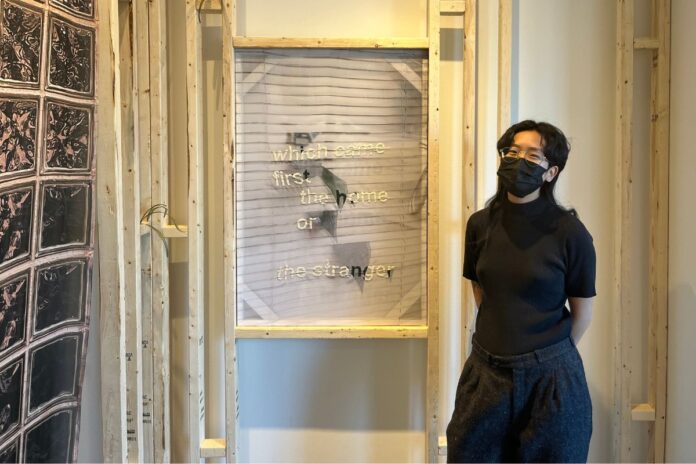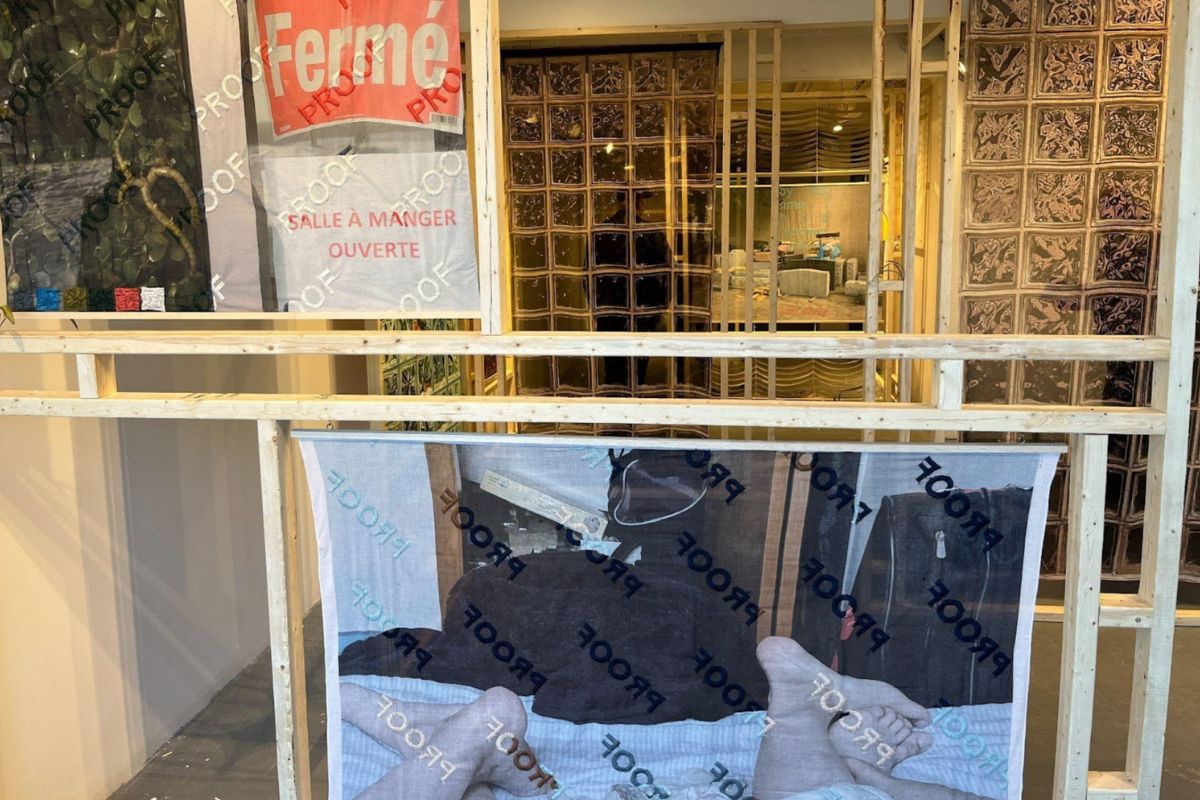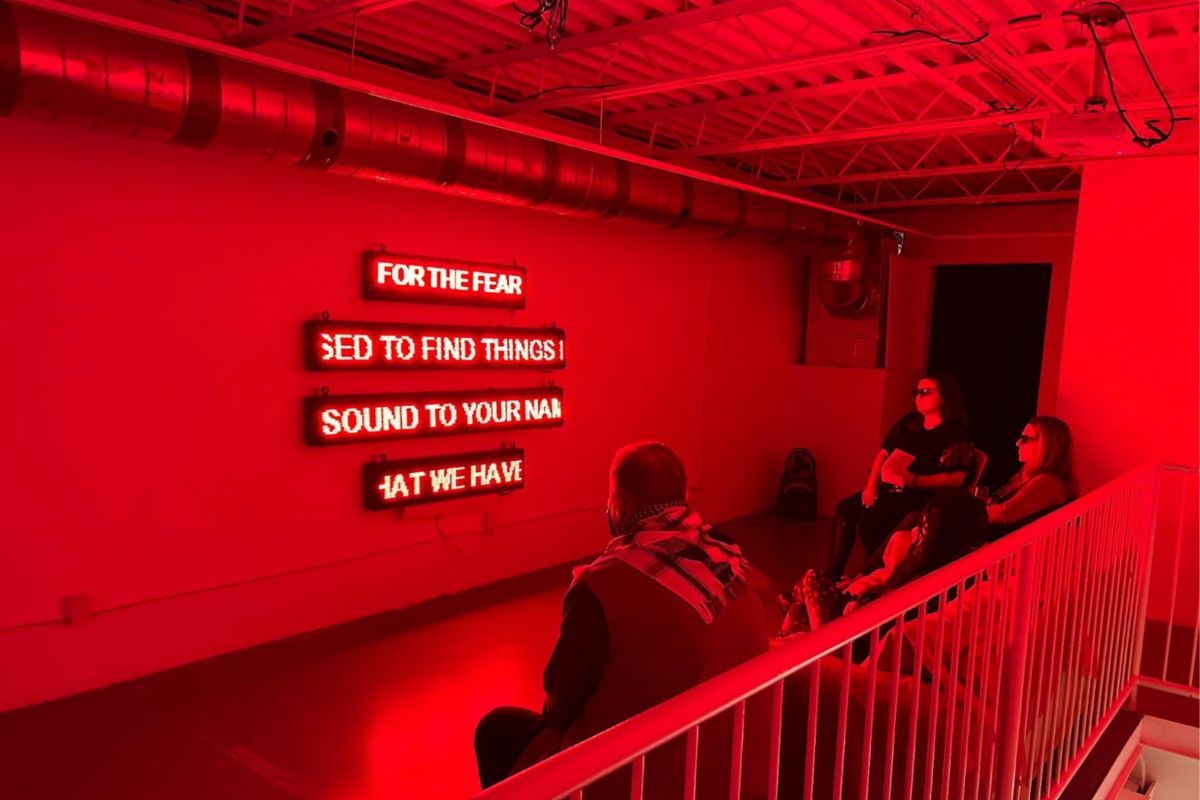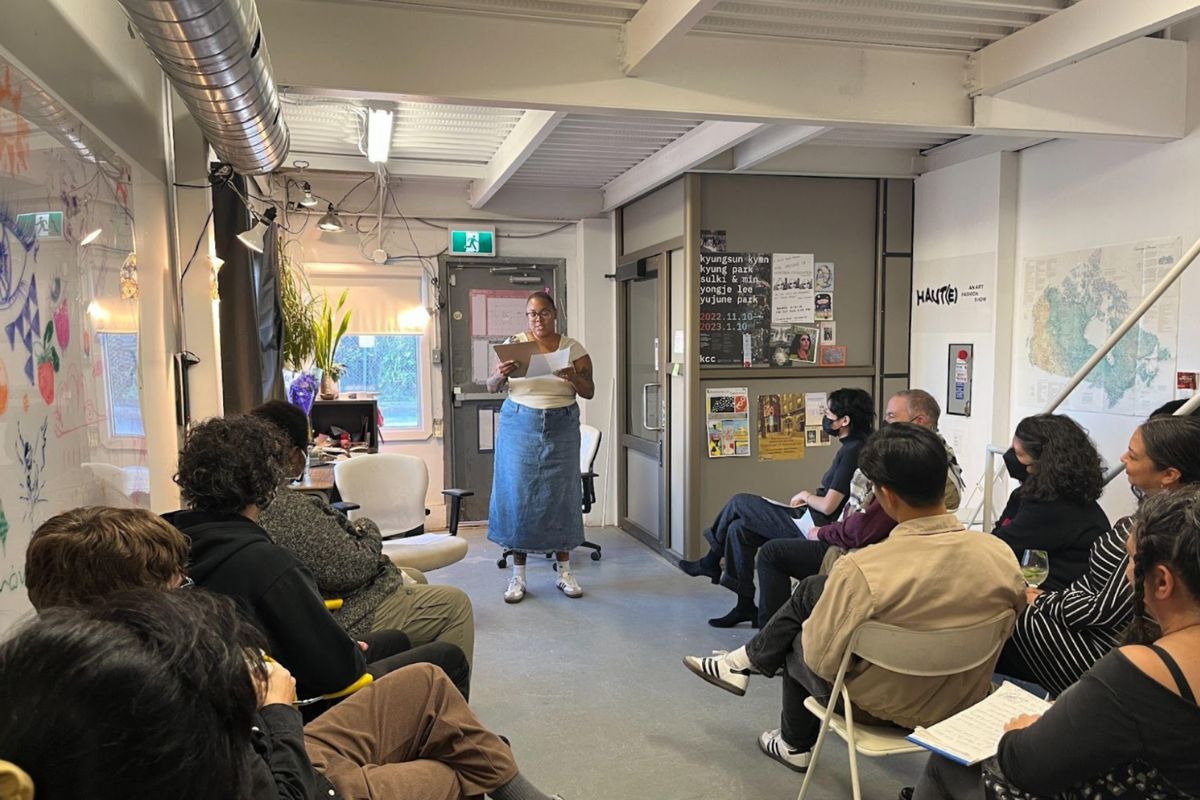
WARNING: This article contains topics of abuse targeting members of the LGBTQ+ community. Those in need of support can call the Sexual Assault Support Center of Ottawa Crisis Line: 613-234-2266, the Mental Health Crisis Line: 613-722-6914 (within Ottawa) and 1-866-996-0991 (outside Ottawa), the Ottawa Distress Centre Crisis Line: 613-238-3311, or the Youth Services Bureau 24/7 Crisis Line: 613-260-2360 or 1-877-377-7775 (toll).
Through various textile photography, delicately crafted paintings and an LED text installation, the art exhibit Do Weeds Still Grow in Heaven? displays abuses present within queer and trans relationships.
In the exhibit, Montreal and Toronto-based artist Lan “Florence” Yee showcases pieces that reflect their own experiences with abuse, ways to think of abuse and recurring imagery of translucent brick walls, symbolizing how they felt when going through this period of life. The exhibit is on at Gallery 101 until Dec. 14.
Yee’s pieces were first created during the pandemic while going through their own experiences.
“It’s really coming out of the anecdotal experience of me having left an abusive relationship two years ago. That’s when I started conceptualizing the show,” Yee said.
A 2021 Statistics Canada report states queer women are two times more likely to experience intimate partner violence in their lifetime than heterosexual women.
“I’m trying to not make [the exhibit] about this singular relationship that I had, but more so, what is it in my experiences, and that of many queer and trans people, where mistreatment is tolerated,” Yee said.
Handmade weeds with wire and green fabric are placed throughout the gallery, which Yee said is intended to amplify the hidden message of weeds as the experience of abuse in queer relationships.
“When I was thinking of whether weeds would grow in heaven or not, I’m thinking … ‘Does something as unpredictable and usually unwanted, but natural, happen in a place like the utopic version we have of heaven?’”
Laura Margita, director and curator of Gallery 101, said the gallery is proud to highlight an obscured experience within the queer and trans community.
“Gallery 101 really believes in the power of art to shed a light on things that we can’t see, and I think this is the best example of that,” she said.

Textile work of Yee’s photography hangs around the gallery with different words and sentences sewn in the form of a watermark overlaying the image. Phrases include “PROOF,” “Everything unwanted is a weed” and “By the time I had reached myself, it was too early.”
Yee said their “PROOF” art piece refers to the abuse experienced in their past relationship as they tried to verify their experiences.
“It was both an archival question and then it turned out to be also a very personal question of like, ‘What kind of evidence do I need to show people of this?’”
The main floor showcases 12 pieces of art, but all attendees are invited upstairs to discover the 13th: a red-lit four-channel text, displaying different messages about a queertopia and dealing with abuse.

Yee said the piece, titled “Landscape as bonfire,” was explicitly intended to be “in the shape of the setting of a rising sun [and] having a comfy seat in front of it.”
Exhibit attendee Tia Carey said “Landscape as bonfire” stood out to her with the bright fluorescent red lights. She also noted that the exhibit was “beautiful” and she enjoyed the underlying garden theme.
In addition to the displayed art pieces, the exhibit’s Nov. 9 launch featured poetry performances by three artists. Lydia Collins performed three of her own pieces, each one revolving around institutional mistreatment of the Black community.
Collins said she hopes the exhibit will encourage attendees to think more deeply about their relationships, not only with other people, but with themselves.
She added “the ability to think outside of what we know and how we’re expected to exist in relationships with other people, especially romantic relationships,” is especially important.

Margita said giving poets the space to read their work was a unique way to welcome the exhibit into the gallery space.
“There was a lot of interest in this particular exhibition and it was so great to have the poetry reading in the middle of it,” she said. “We don’t usually have that and that was a great added extra.”
Featured image by Juliana Italiano/ The Charlatan.





